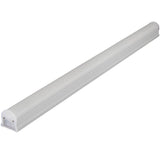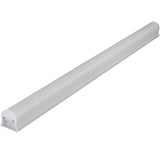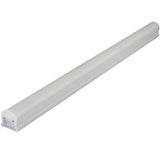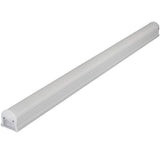Comparing Three LED T8 Retrofit Options
Posted by Dave on for ProLampSales

Currently, T8 fluorescent tubes dominate the commercial and institutional lighting sector both in number of lamps and in lumen output. The USDOE estimated in 2010 that there were 1 billion fluorescent fixtures in the U.S. It is no surprise that LED manufacturers have focused on this potentially huge retrofit market with a large number of LED options. Unlike other LED replacement bulbs, T8 tubes have some subtle, but critical differences in how they are installed. Before you buy, it's worth taking time to understand the pros and cons of the types of LED tubes you will encounter.
The three main types of LED T8 retrofit tubes on the market are differentiated by how they interact with the ballast that operates the existing T8 fluorescent lamps.
Fluorescent lamps require a ballast to transform line voltage to a specified higher voltage for starting fluorescent lamps and to regulate power input to the lamp once it is turned on.
LED tubes do not require a ballast. Instead they use a driver designed either to work with the existing fluorescent ballast or to bypass it. Let's look at three type of LED T8 retrofit packages on the market.
LED T8 Retrofits Using Existing Ballast (Ballast Compatible)
Designed to simplify the retrofit, this LED option requires only a ladder and some new LED tubes. Pull out the existing T8 fluorescent lamps and replace them with the LED tubes. Same socket, same ballast and no wiring required. The installation labor cost is equivalent to replacing burned out fluorescent tubes.
Pros
- Simplicity, the same effort as changing a fluorescent bulb.
- Low installation cost; the change to LED can be accomplished without an electrician. No modifications to the wiring or fixture are required.
Cons
- Because the existing ballast integrates with the new LED tube and internal driver, the life of the ballast becomes important. Older ballasts, particularly electronic ballasts, may not outlast the LED and need replacement, adding to the life cycle cost of the retrofit.
- Ballast compatibility (instant start, rapid start, etc) must be confirmed before buying LED tubes. The existing fluorescent fixtures may or may not have ballasts that match the requirements of the LED.
- LED T8 retrofits that integrate with an existing ballast lose some efficiency compared to other retrofit options.
- Dimming options are limited.
LED Retrofits With Ballast Removed, Internal Driver (Ballast Bypass)
This type of retrofit requires removal of the existing ballast, re-wiring line voltage directly to the socket and use of LED lamps with built-in drivers. Compared to the plug-n-play retrofit where no electrician is required, the installation cost of this option will be higher.
Pros
- Because no power is lost by integrating with an existing ballast, the efficiency exceeds the plug-n-play option.
- With the ballast removed, the life of the LED tube will not be compromised by a ballast that goes bad part way through the life of the LED.
Cons
- Electrician required for the installation.
- Limited dimming, even though ballast has been removed.
- Higher initial cost to complete the retrofit.
LED With Ballast Removed, External Driver (Retrofit Kit)
This type of retrofit has similar installation requirements to the internal driver option. The existing ballast is removed, external driver is installed and sockets may need to be replaced.
Pros
- This option has the highest system efficiency.
- With an external driver mounted in the fixture, multiple LED lamps can be powered with a single driver.
- Dimming and other control strategies can be used.
- Virtually any fluorescent fixture can be modified to work with this option.
Cons
Higher installed costs. However, the increased efficiency and availability of control functionality may, over the life of the LEDs, mitigate the higher installed costs.
Before committing to an LED T8 retrofit, it's worth taking time to evaluate which of the LED retrofit options meet the needs of a particular application. If simplicity, low installation cost or a desire to compare LED to existing fluorescent lighting are high priorities, the plug-n-play options offers a quick, convenient approach. If higher efficiencies, life-cycle ROI and desire for control functionality outweigh the higher installed costs, the external driver kit option may offer the best solution.
Featured Products (View All)
- 0 Comments
- Posted in Fluorescent, LED, Retrofits
0 Comments




